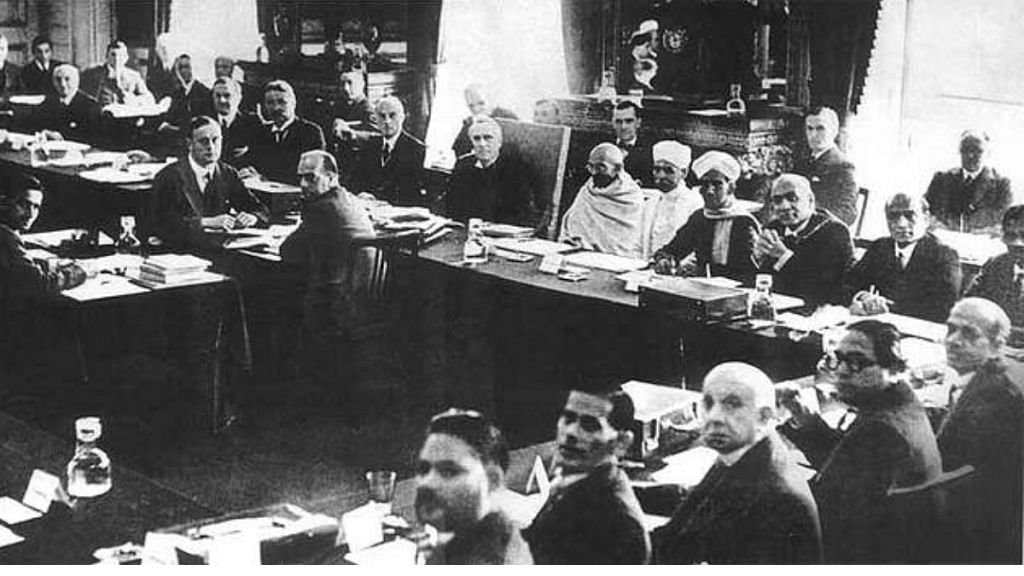It was the talk of the town. From afternoon teas at Buckingham Palace to lunches, dinners and drinks provided by London’s political hostesses. Between 1930 and 1932, India’s social and political leaders headed to London to negotiate the constitutional future of India in the British empire.
The Round Table Conference is mostly remembered for Gandhi’s unsuccessful participation in the second session – where he failed to reconcile competing Hindu and Muslim demands. But this was only one small part of a conference of over 100 delegates.
Its three long sessions (two months, then three, then one) were captured by the world’s news media. UK prime minister Ramsay MacDonald’s concluding address from St James’s Palace was filmed and broadcast in cinemas worldwide, as was the positive reaction of Indian delegates.
This was part of the retaliation against Gandhi’s civil disobedience movement of nonviolence and noncooperation against the British government.
Indian nationalists had been growing increasingly impatient for greater self-government in the 1920s. Divisions were rising between religious groups and politicians across the Indian empire.
To break the deadlock the British Labour government agreed to host an experiment in the new art of modern, international conferencing – turned to imperial ends.
The conference was targeted at changing public opinion as much as producing specific political outcomes. Urban landscapes provided the stages upon which international relations were performed, for global audiences.
In my new book I explore the historical geographies of the Round Table Conference. I look at how the city shaped the conference and how the conference helped shape a multicultural – and at times openly racist – imperial capital.
Imperial London
Official business took place almost exclusively in ancient palaces. The Royal Gallery at the Palace of Westminster was where the conference opened and it concluded in the King’s Robing Room in the House of Lords.
London proved itself well equipped for the challenge of becoming an international city. Afternoon teas at Buckingham Palace were held for each session. At the second, Gandhi’s homespun dhoti (referred to in the press as a “loincloth”) and exposed knees caused a sensation. It was, however, the Mahatma’s calmness while under hostile interrogation by King-Emperor George V that averted a political controversy.
London’s religious spaces also played their part. The London Mosque at Wandsworth was a welcome home for Muslim delegates and its imam, Maulvi Farzand Ali, hosted an “at-home” reception for delegates at the Strand Hotel on January 14 1931. Ten days earlier the imam had conducted evening prayers over the body of Maulana Mohammad Ali, a delegate who died during the conference.
Gandhi’s first meeting was held at the Quaker Friends House in Euston. He stayed with the pacifist social reformer Muriel Lester at the mission house of Kinsley Hall in the east end, itself part modelled on Gandhi’s ashram at Sabarmati in India.
This article is originally published in The Conversation. Read the original article here.
Also read: Take a forest ‘bath’ to recharge. City life causing greater risk of mental health
